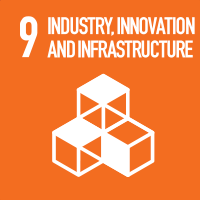Studying at the University of Verona
Here you can find information on the organisational aspects of the Programme, lecture timetables, learning activities and useful contact details for your time at the University, from enrolment to graduation.
Study Plan
This information is intended exclusively for students already enrolled in this course.If you are a new student interested in enrolling, you can find information about the course of study on the course page:
Laurea magistrale in Diritto per le tecnologie e l'innovazione sostenibile - Enrollment from 2025/2026The Study Plan includes all modules, teaching and learning activities that each student will need to undertake during their time at the University.
Please select your Study Plan based on your enrollment year.
1° Year
| Modules | Credits | TAF | SSD |
|---|
2° Year activated in the A.Y. 2023/2024
| Modules | Credits | TAF | SSD |
|---|
6 modules among the following| Modules | Credits | TAF | SSD |
|---|
| Modules | Credits | TAF | SSD |
|---|
6 modules among the following| Modules | Credits | TAF | SSD |
|---|
Legend | Type of training activity (TTA)
TAF (Type of Educational Activity) All courses and activities are classified into different types of educational activities, indicated by a letter.
Artificial intelligence and labour law (2023/2024)
Teaching code
4S008452
Teacher
Coordinator
Credits
6
Also offered in courses:
- Artificial intelligence and labour law of the course Combined Bachelor's + Master's degree in Law
- Artificial intelligence and labour law of the course Master's degree in Artificial intelligence
Language
Italian
Scientific Disciplinary Sector (SSD)
IUS/07 - LABOUR LAW
Period
2° periodo lezioni (2A) dal Feb 12, 2024 al Mar 22, 2024.
Courses Single
Authorized
Learning objectives
The course is included in the learning area on Management innovation and new technologies. It has a twofold objective: to reflect on the logic and functioning of employment relationships as they are conditioned by new technologies and to acquire knowledge and understanding of the way new technologies and artificial intelligence affect the employment relationship.
By the end of the course students will acquire understanding of the regulatory systems and the organizational models of digitized work. Students will also be able to address actual problems that might rise in their professional context. Work in groups and written assignments based on Problem Based Solving (PBS) methods will provide them with the ability to assess the implications of the regulatory framework, develop appropriate reasoning and terminology, and formulate independent judgments. The teaching method is aimed at improving continuous learning skills.
Prerequisites and basic notions
The course focuses on the regulation of the employment relationship and the framework of worker protection, at individual and collective level, with respect to the impact of digitalisation and the use of algorithmic systems in the organisation of work. A preliminary knowledge of the main institutions of labour law and trade union law is therefore required.
Program
The teaching programme includes the presentation and discussion of the following topics:
1. Definitions and distinctions: automated process, algorithm, artificial intelligence.
2. Guarantees for the worker in the European Union's regulatory response to artificial intelligence: human oversight and transparency.
3. The framework of regulatory sources, de iure condito and condendo, at EU and national level.
4. The protection of the worker with respect to technological control and automated processes.
5. New technologies and worker health and safety protection.
6. The articulation of protections in digital platform work.
7. The articulation of protections in smart working.
8. The role and possible strategies of trade unions.
Bibliography
Didactic methods
The teacher will use: a) face-to-face lectures; b) thematic in-depth studies proposed to the students, through the delivery of teaching materials on case studies, organisation in small groups to discuss, analyse and report on the results achieved, classroom elaboration of short written comments c) disciplinary and interdisciplinary workshops with experts, organised remotely on a digital platform.
Learning assessment procedures
Oral exam on the entire program, with discussion of one of the case studies addressed in class.
Evaluation criteria
Ability to discursively organize knowledge; ability to identify, apply in a coordinated way and systematically interpret the regulatory sources, even within a specific case; critical reasoning skills on the study carried out; quality of exposition, competence in the use of specialized vocabulary, effectiveness, linearity. Vote in thirtieths.
Criteria for the composition of the final grade
For those attending: the overall mark expressed in thirtieths is based on the assessment of the final oral examination, but also takes into account the results of participation in group work during class.
For non-attending students: the overall mark expressed in thirtieths is based on the evaluation of the final oral test.
Exam language
Italiano




